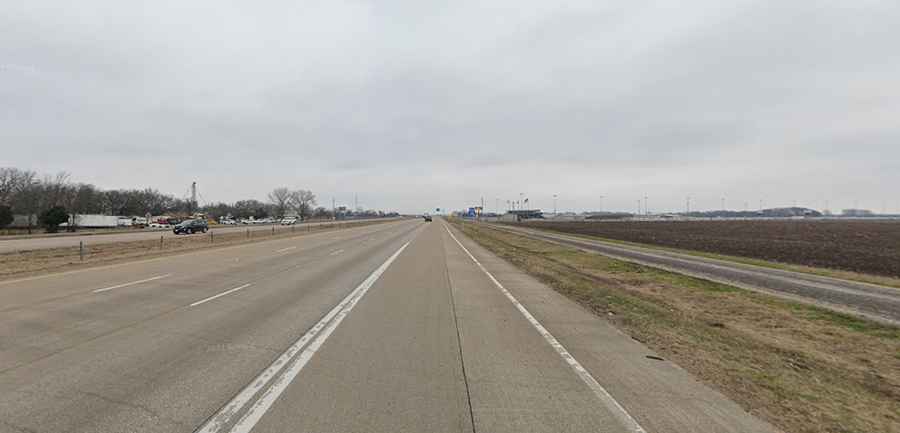What are the most dangerous roads in Texas?
Texas is renowned for its varied landscape, yet it also boasts some of the country's most dangerous highways. The Interstate 45 (I-45) is notably perilous, ranking as the state's deadliest and second nationally.

Other hazardous routes include Interstate 35 (I-35), U.S. Highway 83, and the high-speed corridor between San Antonio and Austin. These roads often suffer from poor surface conditions, even though people have to pay a toll to use them. They have substandard design features, deficient signage, and inadequate guardrails - factors that contribute to their danger level.
The heavy truck traffic in regions such as Eagle Ford Shale exacerbates road damage and escalates maintenance costs. In addition to these issues, Texas recorded the highest number of work zone crash fatalities in 2019 due to insufficient signage and lighting among other reasons.
This situation is further compounded by a fatality rate per 100 million vehicle miles greater than the national average.
Identifying Hazardous Highways
Identification of hazardous highways in Texas reveals Interstate 45 as the most dangerous road, with Interstate 35 and U.S. Highway 83 also notorious for their frequent accidents and unsafe conditions.
I-45 has earned the dubious distinction of being not only the deadliest highway in Texas but also the second most perilous in the entire United States.
Similarly, I-35 is fraught with danger due to its regular road construction projects that often lead to traffic congestion and increased accident risks.
U.S. Highway 83, particularly within McAllen and the Rio Grande Valley region, poses immense threats to motorists owing to a lack of proper maintenance and safe infrastructure.
Furthermore, the highway between San Antonio and Austin allows high-speed limits up to 85 MPH which although expedites travel time significantly escalates the likelihood of fatal collisions due to high velocity impacts.
The situation is further exacerbated by heavy truck traffic causing extensive damage leading to more roadway deterioration thereby multiplying maintenance costs exponentially.
In light of these findings, it becomes paramount for motorists navigating these treacherous routes to be aware of potential hazards they may encounter en route; setting us on a course towards understanding 'road conditions and risks'.
Road Conditions and Risks
Deteriorating infrastructure and inadequate road maintenance pose significant risks to motorists, contributing to a high number of traffic accidents annually. These hazards can range from potholes and shoulder drop-off to uneven surfaces and poor drainage systems. Moreover, the presence of standing water on road surfaces further exacerbates these challenges, leading to potentially fatal incidents.
Deficient signage and lighting, particularly in construction zones, also play a crucial role in causing accidents. In fact, Texas reported the highest number of work zone crash fatalities in 2019. Such statistics underline the urgent need for improved safety measures along these routes.
Consequently, drivers are strongly advised to remain vigilant about changing road conditions and construction updates for their personal safety. Nevertheless, despite individual precautions taken by motorists, it is incumbent upon relevant authorities to ensure that roads are safe for use by all users.
Impact of Heavy Traffic
The substantial volume of heavy truck traffic in the state not only inflicts considerable damage to the road infrastructure, but also significantly escalates maintenance costs which may inadvertently lead to neglect in regular upkeep thereby heightening the risk of accidents.
This scenario is particularly evident within the Eagle Ford Shale region where oil field trucks frequently ply, contributing substantially to numerous vehicular mishaps.
- The incessant wear and tear inflicted on roads by heavy vehicles can lead to dangerous surface conditions such as potholes and uneven surfaces.
- Regular maintenance often becomes a daunting task given the high costs involved and could result in hazardous situations due to deferred repairs.
- In areas with oil extraction activities like Eagle Ford Shale region, the problem is exacerbated with an increase in both truck traffic and accident rates.
- The financial burden incurred from escalated maintenance cost may inadvertently lead public authorities to prioritize other projects over road safety improvements.
These factors combined create a perilous environment for motorists navigating Texas' highways. Understanding this reality underscores the need for greater vigilance while driving, especially amidst heavy traffic.
Delving further into this issue, it would be enlightening to examine pertinent accident statistics and contributing factors that highlight Texas' road safety predicament.
Accident Statistics and Factors
Scrutinizing the accident data and prevalent contributing factors can shed light on the pressing issue of road safety in this southern U.S. state. Data reveals that Texas had a higher fatality rate per 100 million vehicle miles compared to the national average, indicating an elevated risk for motorists.
In particular, I-45 and I-35 are among the most dangerous roads due to their high traffic volume and frequent construction projects.
A significant number of accidents in Texas were attributed to deficient road conditions such as potholes, shoulder drop-off, uneven surfaces, poor drainage, inadequate signage, and improper lighting in work zones. Analysis further showed that Texas led in work zone crash fatalities nationwide for 2019.
A noteworthy observation was that many motorists involved in fatal accidents did not utilize seat belts, highlighting a lackadaisical approach towards safety measures.
Another factor contributing to dangerous roads is heavy truck traffic causing increased maintenance costs and road damage. For instance, oil field truck traffic in the Eagle Ford Shale region has been linked with numerous crashes.
The implications of these statistics underscore the necessity for comprehensive legal assistance for victims impacted by hazardous road conditions.
Final thoughts
In conclusion, Texas hosts some of the most hazardous roads in the United States. Factors such as poor road conditions, improper design, insufficient signage, and heavy truck traffic contribute to these dangers. The higher-than-average fatality rate on these roads underscores their perilous nature. It is essential for victims of accidents on these dangerous highways to seek legal assistance to adequately compensate for their losses.